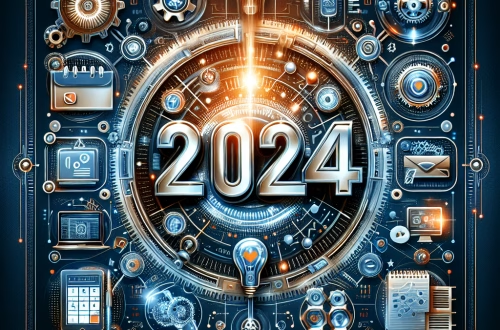Summary:
Head-to-Head Comparison: Claude vs Microsoft Power Platform AI Integration: This article compares Anthropic’s Claude AI with Microsoft Power Platform’s AI capabilities, two distinct approaches to artificial intelligence for business and personal use. Claude is a standalone generative AI model specializing in natural language tasks like content creation and analysis, while Microsoft Power Platform embeds AI tools into workflow automation (Power Automate), apps (Power Apps), and data visualization (Power BI). These integrations matter because they represent different paradigms: Claude emphasizes advanced conversational intelligence, whereas Microsoft focuses on no-code/low-code business process automation enhanced by AI. Understanding their differences helps novices choose the right tool for tasks ranging from creative projects to enterprise workflow optimization.
What This Means for You:
- Accessibility vs. Specialization: Microsoft Power Platform offers drag-and-drop AI integration requiring minimal technical skills, ideal for automating routine tasks. Claude demands more direct prompting expertise but delivers superior creative/textual outputs. Evaluate your team’s technical comfort level before choosing.
- Cost Considerations: Power Platform operates on per-user/month licensing (from $20), while Claude offers free tiers and paid API access. Start with Claude’s free version for content experiments before committing to Power Platform subscriptions.
- Data Handling: Power Platform seamlessly integrates with Microsoft’s Azure cloud services for secure enterprise data processing. Claude operates more independently – implement strict data governance protocols when handling sensitive information.
- Future Outlook: Expect tighter integrations between standalone AIs like Claude and platforms like Power Platform. However, watch for “AI fragmentation” as businesses struggle with disconnected tools. Prioritize solutions offering API connectivity for future-proofing.
Head-to-Head Comparison: Claude vs Microsoft Power Platform AI Integration
Core Architectural Differences
Claude operates as a conversational AI model trained via Constitutional AI principles, excelling at complex reasoning and creative language tasks. Microsoft Power Platform incorporates pre-built AI capabilities (Azure Cognitive Services, OpenAI models) into business tools. The fundamental distinction lies in deployment: Claude functions as an independent intelligence, while Power Platform’s AI augments specific business functions like form processing (AI Builder) or predictive analytics.
Ideal Use Cases
Claude Shines For:
– Long-form content generation (blogs, technical documentation)
– Nuanced Q&A and research assistance
– Ethical reasoning applications
– Complex text analysis (contract review, sentiment parsing)
Power Platform Excels At:
– Automated document processing (invoice scanning, data extraction)
– CRM workflow enhancements (Salesforce/Microsoft Dynamics integration)
– Predictive business analytics dashboards
– Chatbot development for customer service portals
Strengths Breakdown
Claude’s Advantages:
– Superior contextual understanding (100K+ token window)
– Transparent safety mechanisms via Constitutional AI
– Multimodal future-proofing (emerging image/voice capabilities)
– Prompt engineering flexibility
Power Platform’s Strengths:
– Prebuilt connectors for 1,000+ business applications
– Visual workflow designer (minimal coding)
– Enterprise-grade security compliance (SOC 2, ISO 27001)
– Real-time data synchronization
Critical Limitations
Claude’s Constraints:
– No native integration with business databases
– Limited image/file processing in current versions
– Requires manual API setup for automation
– Lacks built-in user management controls
Power Platform’s Weaknesses:
– Generative AI features less sophisticated than Claude
– Complex licensing structure
– Steep learning curve for advanced automations
– Limited customization of embedded AI models
Integration Capabilities
While Power Platform offers native Microsoft ecosystem integration (Teams, SharePoint, Excel), Claude requires middleware like Zapier for similar connectivity. However, Claude’s API allows deeper model customization compared to Power Platform’s more rigid AI Builder components. For hybrid solutions, Claude can enhance Power Platform via Azure OpenAI service connections, though this requires technical configuration.
Cost-Benefit Analysis
Microsoft Power Platform becomes cost-effective at scale ($40/user/month for premium features), while Claude’s pricing scales with usage (pay-per-token). Small businesses benefit from Claude’s free tier for basic tasks, whereas enterprises needing workflow automation justify Power Platform’s subscription model. Consider hidden costs: Power Platform may require Azure credits for heavy AI processing, while Claude demands developer resources for integration.
People Also Ask About:
- Can Claude replace Microsoft Power Platform’s AI?
No – they serve complementary roles. Claude excels at language generation and analysis, while Power Platform specializes in embedding AI within business workflows. Think of Claude as an intelligent collaborator versus Power Platform as an automation engine with AI enhancements. - Which platform better protects my data privacy?
Power Platform offers enterprise-grade compliance tools through Microsoft’s infrastructure, ideal for regulated industries. Claude employs strict data governance but operates as a cloud service – for sensitive data processing, Power Platform’s on-premises deployment options provide greater control. - How difficult is implementation for non-developers?
Microsoft Power Platform requires less coding expertise with its visual designers, suitable for business analysts. Claude demands prompt engineering skills for optimal results, though its conversational interface lowers initial barriers for novices. - Which solution scales better for large organizations?
Power Platform’s centralized admin controls and pre-built compliance frameworks better support enterprise deployment. Claude requires custom architecture for large-scale implementations but offers superior natural language capabilities at volume. - Can these tools work together?
Yes – Claude’s API can integrate with Power Automate for enhanced language processing in workflows. Example: Use Claude to analyze customer feedback from Power BI datasets, then trigger Power Automate workflows based on sentiment results.
Expert Opinion:
Industry patterns show convergence between standalone AI models and business platforms, but significant capability gaps remain. Claude represents the cutting edge of ethical generative AI, while Power Platform delivers practical automation for operational teams. Novices should prioritize clearly defined use cases – creative/analytic tasks favor Claude, process automation aligns with Power Platform. Crucially, both systems require human oversight; neither replaces critical thinking for high-stakes decisions. Expect increased regulatory scrutiny on both models’ data handling practices in 2024-2025.
Extra Information:
- Anthropic’s Claude Use Cases – Official breakdown of Claude’s capabilities in business contexts.
- Microsoft AI Builder Documentation – Technical guidance for Power Platform’s AI components.
- Forrester AI Platform Analysis – Independent evaluation of competing solutions (subscription required).
Related Key Terms:
- Claude vs Power Platform AI business automation
- Enterprise AI implementation strategies USA
- No-code AI integration comparison
- Generative AI for Microsoft Power Automate
- Anthropic Claude API pricing scalability
- AI workflow automation security compliance
- Power Platform AI Builder limitations 2024
Check out our AI Model Comparison Tool here: AI Model Comparison Tool
#HeadtoHead #Comparison #Headlines
*Featured image provided by Pixabay





